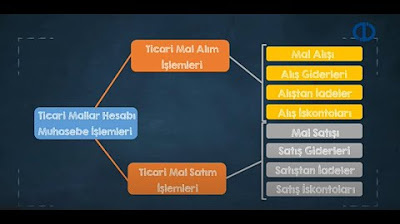FİNANSAL MUHASEBE - Ünite 3 Konu Anlatımı 1
Summary
TLDRThis educational video on financial accounting focuses on current assets, defining them as resources that can be consumed or converted to cash within a year. It outlines the classification of current assets, such as cash, securities, and receivables, and explains their accounting processes, including how to record increases and decreases in various accounts. The video also addresses the management of other receivables and emphasizes the importance of understanding these concepts for effective financial management. Viewers are encouraged to grasp these key accounting principles to enhance their financial knowledge.
Takeaways
- 😀 The program focuses on financial accounting, specifically on current assets.
- 💼 Accounting assets represent the values owned by a business, including capital contributions and retained earnings.
- 📊 Assets are categorized into current and non-current assets based on their usability within a year.
- 💰 Current assets are expected to be consumed, used, or converted to cash within a year.
- 🏦 Cash and cash equivalents include readily available assets that can be converted into cash without value loss.
- 📄 Receivables and payables must be carefully tracked for financial accuracy and accountability.
- 🔄 The program details how to manage and account for cash equivalents like checks and bank deposits.
- 💵 Securities represent investment instruments that provide rights to ownership or debt, categorized as current or long-term.
- 📈 Trade receivables arise from goods delivered or services provided, leading to accounts receivable.
- 📅 Other receivables include non-commercial claims expected to be settled within a year.
Q & A
What are the two main categories of assets in accounting?
-Assets in accounting are divided into two main categories: Current Assets and Non-Current Assets (or Fixed Assets).
What defines current assets?
-Current assets are expected to be consumed, used, or converted into cash within one year or less.
Can you list some examples of current assets?
-Examples of current assets include cash and cash equivalents, securities, receivables, inventories, and prepaid expenses.
What is included in the cash category of current assets?
-The cash category includes cash on hand and bank deposits that can be readily accessed for transactions.
How are accounts receivable classified?
-Accounts receivable are classified into short-term and long-term based on the payment timeline, and they can also be categorized as commercial receivables (from sales) or other receivables.
What is the significance of tracking checks in accounts receivable?
-Tracking checks in accounts receivable is important to monitor money owed to the business until it is collected, ensuring accurate financial reporting.
What procedures are followed for managing changes in current assets accounts?
-Changes in current asset accounts are recorded following standard accounting principles, which include maintaining a debit (increase) and credit (decrease) entry system.
What role do securities play in current assets?
-Securities represent investments that can provide periodic income and can be classified as either short-term or long-term based on their maturity.
Why is understanding current assets important for financial accounting?
-Understanding current assets is crucial for financial accounting as it impacts liquidity, financial health, and the ability to meet short-term obligations.
What is the process for recording an increase in cash in accounting?
-When cash increases, it is recorded on the debit side of the cash account, reflecting an increase in the asset.
Outlines

This section is available to paid users only. Please upgrade to access this part.
Upgrade NowMindmap

This section is available to paid users only. Please upgrade to access this part.
Upgrade NowKeywords

This section is available to paid users only. Please upgrade to access this part.
Upgrade NowHighlights

This section is available to paid users only. Please upgrade to access this part.
Upgrade NowTranscripts

This section is available to paid users only. Please upgrade to access this part.
Upgrade Now5.0 / 5 (0 votes)





